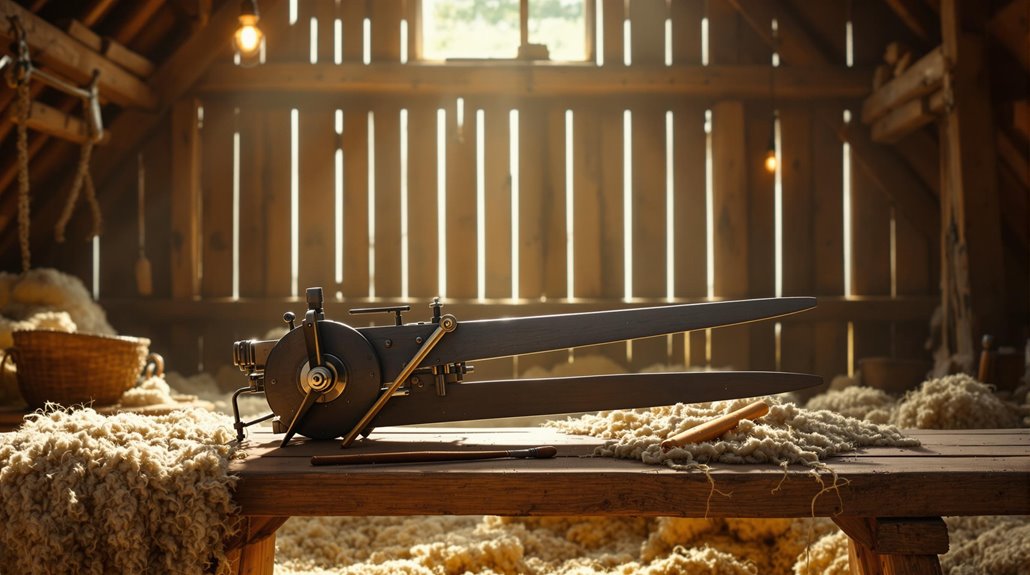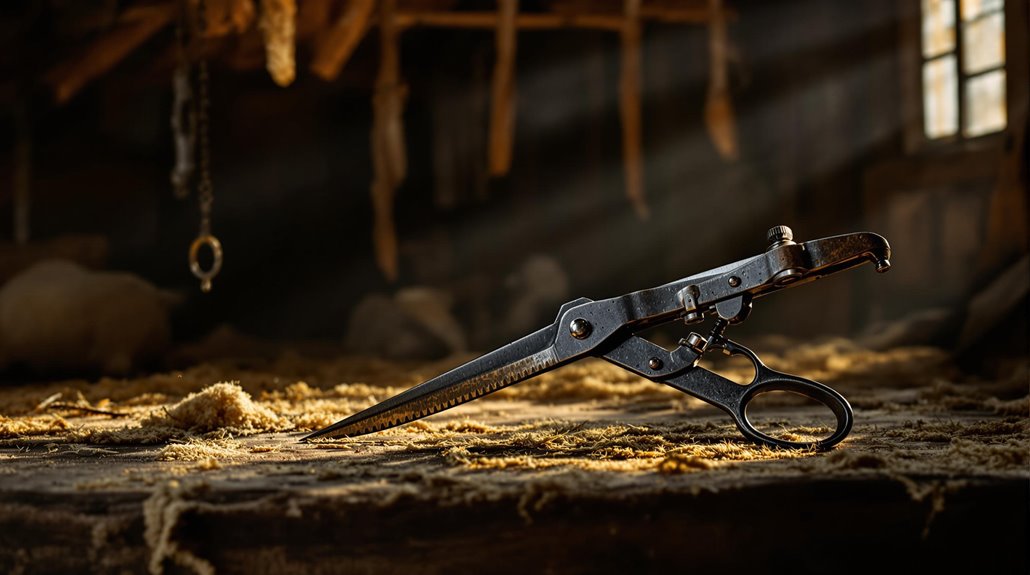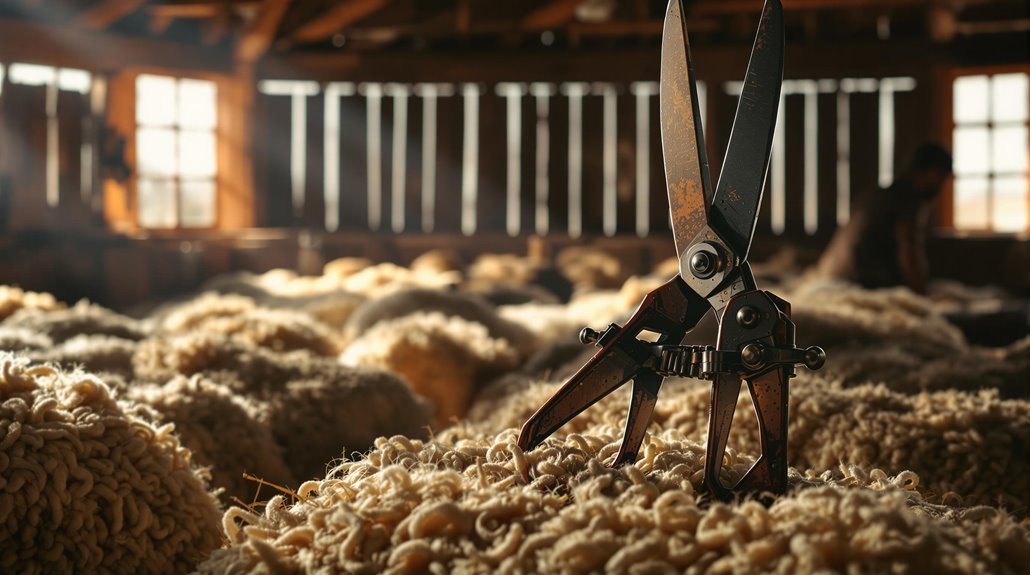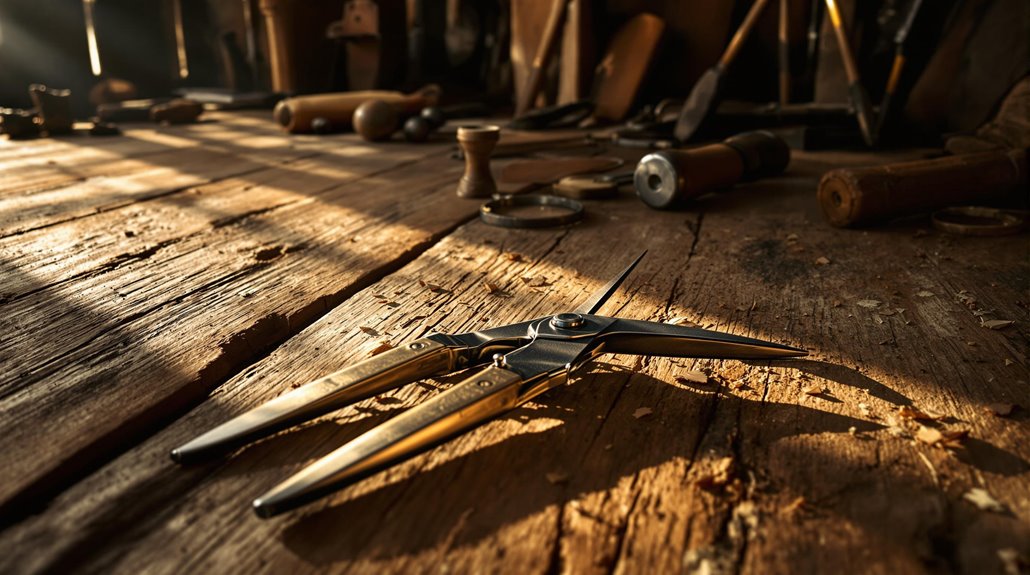David Unaipon’s Shears of Genius: The Indigenous Inventor Who Shocked Sheep Farmers
You've probably seen David Unaipon's face on Australia's $50 note, but do you know the groundbreaking story behind his most important invention? In 1909, this brilliant Indigenous innovator transformed the sheep industry with a mechanical breakthrough that left farmers speechless. His journey from mission school student to revolutionary inventor wasn't just about creating better sheep shears – it was about defying expectations and reshaping Australia's agricultural landscape forever.
From Mission School to Master Inventor

While many children received basic education at Point McLeay Mission in South Australia, David Unaipon's exceptional intelligence set him apart from an early age.
Starting school at seven, you'll find his education journey wasn't limited to classroom walls – he balanced traditional Aboriginal stories and skills with formal studies until age 13.
His time as a servant in Adelaide proved transformative when C.B. Young fostered his growing love for science, philosophy, and music. Despite his achievements, Unaipon faced challenges as his numerous inventions lacked sufficient financial backing for patent protection.
After returning to Point McLeay at 20, Unaipon's inventive spirit flourished. While working as a bootmaker and church organist, he devoured scientific journals and conducted experiments, drawing inspiration from Aboriginal boomerang designs.
This unique blend of traditional knowledge and scientific curiosity would later fuel his groundbreaking inventions, including his famous 1909 sheep-shearing handpiece patent. Remarkably, he was recognized by scientists of his time for making accurate predictions about polarized light and helicopter flight.
The Need for Better Sheep Shearing
Three major challenges plagued the sheep shearing industry when Unaipon entered the scene: slow processing times, frequent injuries to sheep, and inconsistent wool quality. Most sheep breeds required annual shearing cycles to maintain their health and wool production.
You'd find shearers racing against time, processing up to 200 sheep daily while being paid by volume, often at the expense of animal welfare. The use of protective equipment was essential to prevent injuries to both shearers and livestock.
The problems didn't stop there. Traditional shearing methods posed serious risks to sheep health. You could see everything from minor cuts to severe injuries, including damaged teats and ears.
Poor shearing efficiency not only harmed the animals but also hurt farmers' profits through reduced wool quality and increased labor costs.
The industry desperately needed innovation. With skilled shearers in high demand and sheep requiring regular shearing for their health, the call for better, faster, and safer methods became impossible to ignore.
A Revolutionary Motion Design
Through ingenious application of the boomerang's principles, David Unaipon developed a sheep-shearing handpiece that transformed the industry in 1909. His mechanical innovation converted circular motion into straight-line movement, a breakthrough that had eluded inventors before him.
If you'd studied his design principles, you'd notice how he cleverly used centrifugal and rotary motion, combined with an eccentric mechanism, to create a tangential reciprocating movement. This was the first straight-line motion shearing machine ever created, and it's still the cornerstone of modern mechanical sheep shears. The innovation increased productivity dramatically, allowing shearers to handle over 300 sheep per day compared to traditional methods.
You'll find his "Improved mechanical motion device" patent revolutionized how the cutting blade moved, making it possible to remove fleece more efficiently. What once took all day could now be accomplished in minutes, thanks to Unaipon's brilliant understanding of motion conversion. The success of his invention established him as Australia's Leonardo da Vinci, reflecting his innovative spirit and diverse talents.
Breaking Ground in Australian Agriculture
Unaipon's revolutionary shearing design marked just one chapter in Australia's rich agricultural story.
You'll find that long before mechanical innovations transformed the wool industry, Indigenous practices had already established sophisticated agricultural systems across the continent.
While Unaipon's shears boosted daily tallies from 30 to over 300 sheep, Aboriginal agricultural sustainability extended far beyond wool production. His inventive prowess led to nineteen provisional patents across multiple industries.
Through traditional fire management, stone fish traps, and eel farms, Indigenous Australians cultivated the land without depleting its resources. The use of controlled burns reduced bushfire risks while simultaneously improving soil quality.
Today, you're witnessing a revival of these time-tested methods. The Indigenous Traditional Agriculture Knowledge Hub promotes native farming techniques, while Black Duck Foods champions traditional practices.
As Australia faces climate challenges, these ancient agricultural approaches offer modern solutions, proving that innovation isn't always about creating something new – sometimes it's about rediscovering what already works.
The Struggle for Recognition

Despite his brilliance as an inventor, David Unaipon battled four major obstacles that denied him proper recognition during his lifetime: financial hardship, racial discrimination, intellectual property theft, and systemic barriers.
You'll find that financial barriers prevented him from fully patenting his innovations, including his revolutionary sheep shearing design that others adopted without credit.
Racial discrimination followed him everywhere – he was often denied accommodation and mockingly promoted as "Australia's Cleverest Darkie."
His remarkable scientific mind earned him the nickname "Australia's Leonardo" for his innovative thinking and passion for invention.
Even his intellectual work wasn't safe; anthropologist W. Ramsay Smith plagiarized his writings, publishing Unaipon's "Myths and Legends of the Australian Aboriginals" under his own name.
His early work with Aborigines Friends Association in the 1910s helped him travel and share Aboriginal stories, though this provided little financial stability.
It wasn't until decades later that proper recognition came through posthumous honors, including the FAW Patricia Weickhardt Award and his image on Australia's $50 banknote.
An Enduring Scientific Legacy
While recognition eluded David Unaipon during his lifetime, his scientific achievements left an indelible mark on Australian innovation.
You'll find his scientific legacy spans multiple domains, from his groundbreaking sheep shearing handpiece to his prophetic helicopter designs based on boomerang principles.
 Coronation medal in 1953 while continuing his relentless pursuit of innovation.
Coronation medal in 1953 while continuing his relentless pursuit of innovation.
Today, his cultural impact continues through his presence on Australia's $50 note and the establishment of various awards and lectures bearing his name, cementing his reputation as "Australia's Leonardo."










